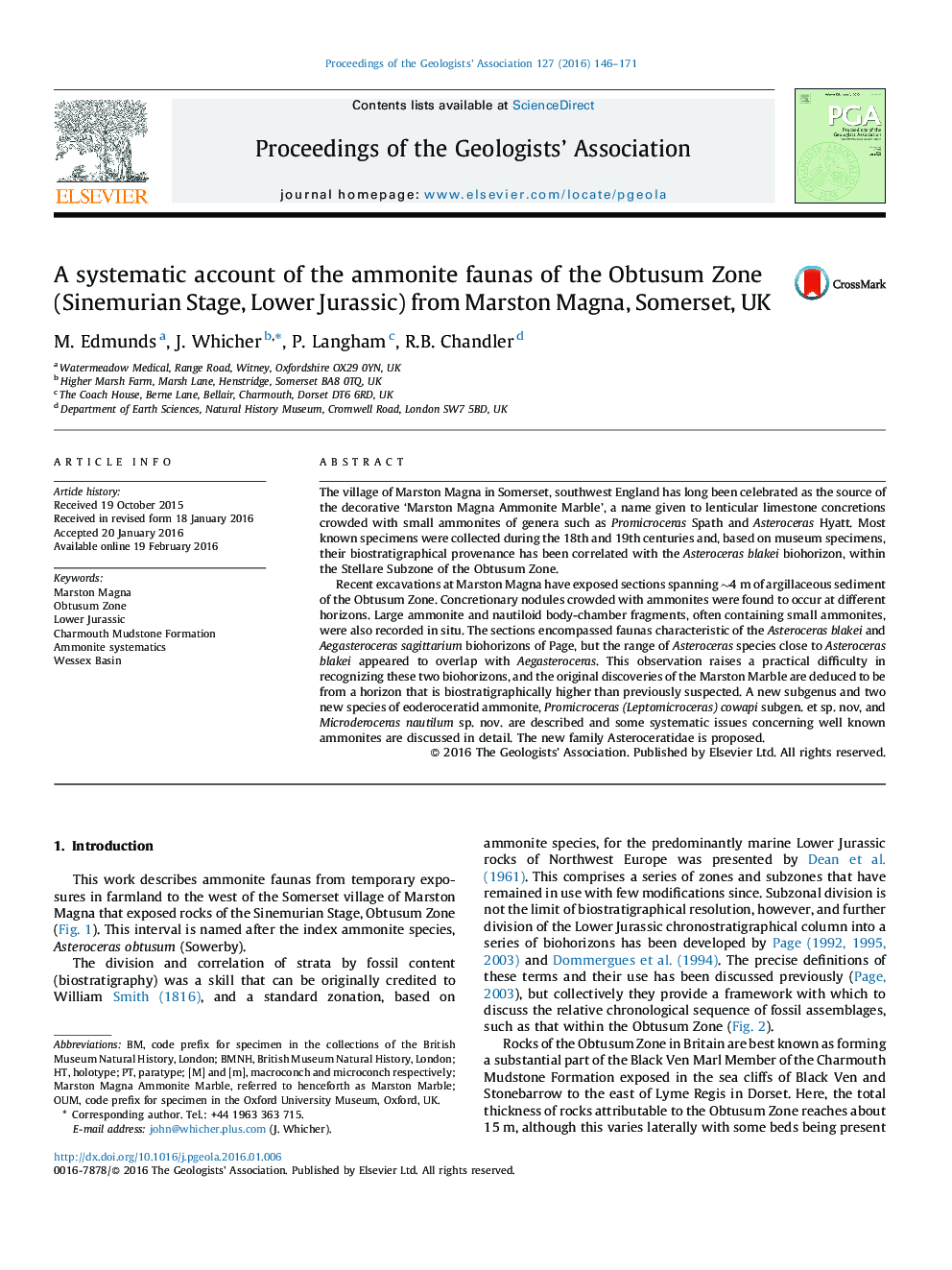| Article ID | Journal | Published Year | Pages | File Type |
|---|---|---|---|---|
| 4734980 | Proceedings of the Geologists' Association | 2016 | 26 Pages |
The village of Marston Magna in Somerset, southwest England has long been celebrated as the source of the decorative ‘Marston Magna Ammonite Marble’, a name given to lenticular limestone concretions crowded with small ammonites of genera such as Promicroceras Spath and Asteroceras Hyatt. Most known specimens were collected during the 18th and 19th centuries and, based on museum specimens, their biostratigraphical provenance has been correlated with the Asteroceras blakei biohorizon, within the Stellare Subzone of the Obtusum Zone.Recent excavations at Marston Magna have exposed sections spanning ∼4 m of argillaceous sediment of the Obtusum Zone. Concretionary nodules crowded with ammonites were found to occur at different horizons. Large ammonite and nautiloid body-chamber fragments, often containing small ammonites, were also recorded in situ. The sections encompassed faunas characteristic of the Asteroceras blakei and Aegasteroceras sagittarium biohorizons of Page, but the range of Asteroceras species close to Asteroceras blakei appeared to overlap with Aegasteroceras. This observation raises a practical difficulty in recognizing these two biohorizons, and the original discoveries of the Marston Marble are deduced to be from a horizon that is biostratigraphically higher than previously suspected. A new subgenus and two new species of eoderoceratid ammonite, Promicroceras (Leptomicroceras) cowapi subgen. et sp. nov, and Microderoceras nautilum sp. nov. are described and some systematic issues concerning well known ammonites are discussed in detail. The new family Asteroceratidae is proposed.
